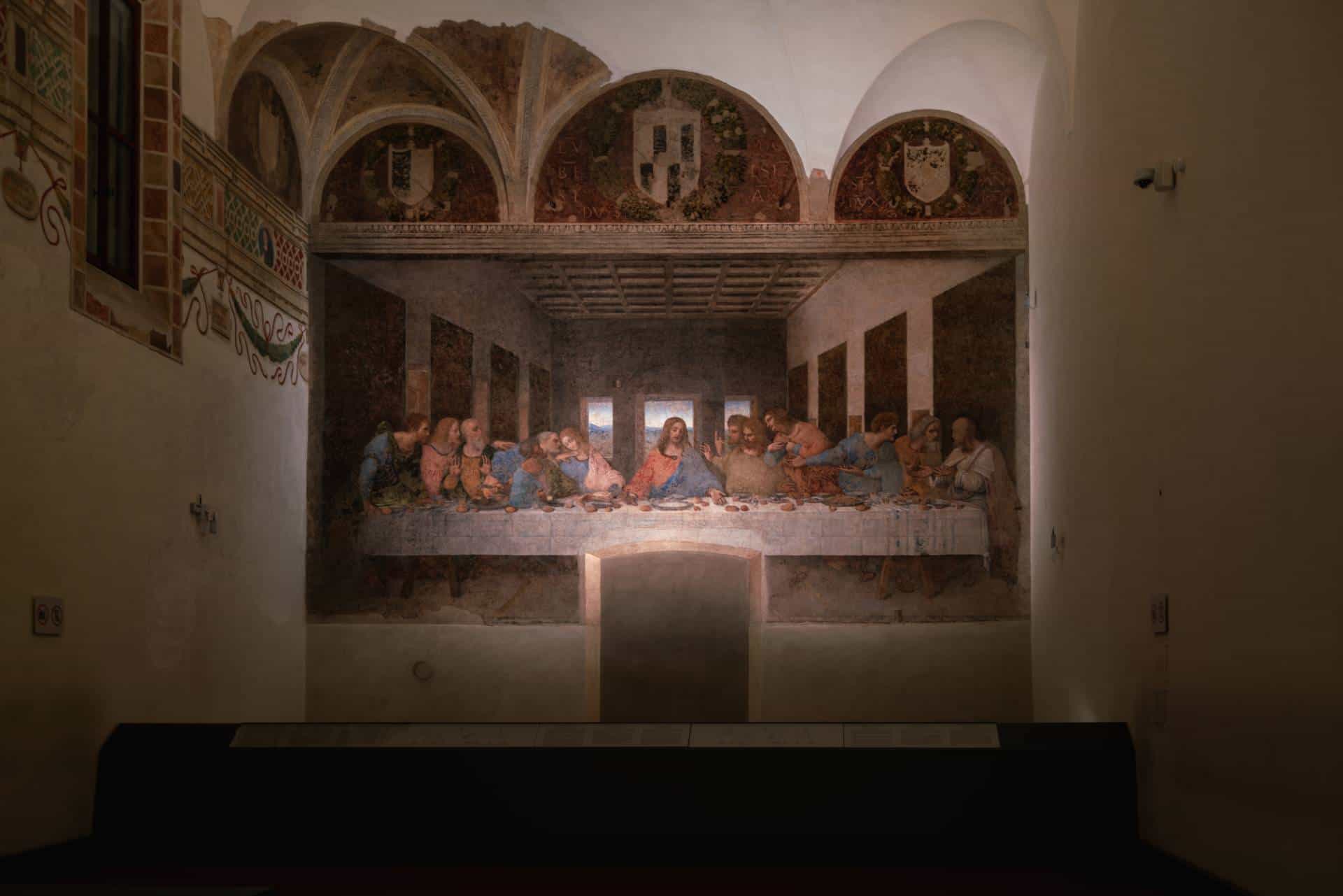
The Last Supper, one of the world's most famous artworks, is located in Milan, Italy, specifically in the refectory of the Dominican convent of Santa Maria delle Grazie. Painted by Leonardo da Vinci between 1494 and 1498, this masterpiece depicts the biblical scene of Jesus Christ sharing his last meal with his apostles before his crucifixion. The fresco painting, measuring approximately 460 cm × 880 cm (180 in × 350 in), covers an entire wall of the refectory, with Christ at the center and his disciples flanking him on either side. Leonardo's meticulous attention to detail and his mastery of perspective and composition are evident in the way he captures the movements and expressions of the figures, particularly the emotional turmoil of Judas, who is identified by some scholars as the disciple betraying Jesus. The Last Supper is painted in tempera and oil on plaster, a method that would contribute to its gradual deterioration over the centuries.
Commissioned by Ludovico Sforza, the Duke of Milan, Leonardo worked on the painting for several years, meticulously planning and executing each detail. The Last Supper was intended to adorn the refectory of the Dominican convent, serving as a visual representation of the Eucharist for the friars who dined there. Leonardo's innovative approach to the composition, with Christ at the focal point and the apostles arranged in groups of three, reflects his deep understanding of narrative storytelling and human psychology. The painting remains one of the most iconic depictions of the Last Supper in art history.
Despite its fame, the Last Supper has faced numerous challenges over the centuries, including damage caused by neglect, war, and environmental factors. During the Second World War, the refectory sustained heavy damage from bombing raids, but miraculously, the wall bearing Leonardo's mural remained intact. In the centuries following its completion, the painting underwent multiple restorations and conservation efforts to preserve its delicate state.
Today, visitors to Milan have the opportunity to see the Last Supper in person by booking tickets related to admissions for specific time slots. Tickets for visits between February and April 2024 will go on sale through the usual purchasing channels, allowing art enthusiasts and tourists alike to experience this iconic painting up close. The refectory of the Dominican convent of Santa Maria delle Grazie, where the Last Supper is housed, has become a UNESCO World Heritage Site, attracting a large number of visitors from around the world.
The significance of the Last Supper extends beyond its artistic merit; it also holds deep religious and cultural importance as a representation of one of the most significant events in Christian theology. The painting's portrayal of Christ and his disciples, with the dramatic moment of revelation and betrayal captured in their expressions, has inspired countless copies and derivations throughout art history. The Last Supper remains an enduring symbol of faith, devotion, and artistic achievement, continuing to captivate audiences with its timeless beauty and profound storytelling.










